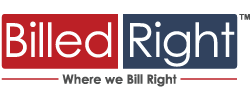How to Streamline Automated Enrollment in Healthcare

Efficient Enrollment in Healthcare
Automating the enrollment process in healthcare is becoming increasingly essential for medical practices. It not only simplifies administrative tasks but also enhances overall operational efficiency. Understanding and leveraging this automated approach can lead to significant improvements in practice management.
Understanding the Importance of Automated Enrollment
The significance of automated enrollment cannot be overstated. It allows healthcare organizations to streamline the onboarding of providers while ensuring compliance with various regulations. Automated systems reduce the tedious and often error-prone manual processes that can slow down provider enrollment.
Key advantages of automated enrollment include:
| Advantage | Description |
|---|---|
| Speed | Automation accelerates the enrollment process, allowing providers to begin services sooner. |
| Accuracy | Automated systems minimize human errors, ensuring that all necessary information is correctly captured. |
| Compliance | Automated enrollment helps ensure adherence to regulatory standards, reducing the risk of penalties. |
Healthcare professionals can utilize automated enrollment to focus on patient care rather than getting caught up in administrative tasks.
Benefits of Automating the Enrollment Process
The benefits of automating the enrollment process extend beyond mere convenience. By implementing automation, healthcare facilities can experience improvements in various areas of practice management.
| Benefit | Description |
|---|---|
| Cost Efficiency | Reducing manual labor decreases operational costs associated with administrative tasks. |
| Enhanced Data Management | Automation allows for better tracking and management of provider credentials, streamlining access to necessary documents. |
| Improved Revenue Cycle | A faster enrollment process leads to quicker billing and reimbursement, thus positively impacting the revenue cycle. |
Healthcare organizations that address common challenges in provider enrollment can significantly increase efficiency. For instance, automating the handling of credentialing denials can enhance revenue outcomes.
Understanding the importance and benefits of automating the enrollment process is the first step toward enhancing overall medical practice management.
Implementing Automated Enrollment
Automated enrollment streamlines processes in healthcare, particularly in provider credentialing and revenue cycle management. These improvements facilitate efficiency and accuracy, allowing healthcare professionals to focus more on patient care.
Streamlining Provider Credentialing
Streamlining provider credentialing through automation significantly enhances efficiency. This process involves verifying a provider’s qualifications to ensure they meet the necessary standards. Utilizing technology can simplify the collection and management of credentials, reducing the time taken for verification.
The automated credentialing process eliminates manual data entry, which often leads to errors. It allows for the tracking of provider credentials in real-time and aids in managing documentation needed for compliance. A streamlined process not only improves turnaround times but also enhances the overall quality of verification.
Below is a comparison of traditional versus automated credentialing timelines:
| Credentialing Method | Average Time (Days) |
|---|---|
| Traditional Credentialing | 60-90 |
| Automated Credentialing | 30-45 |
Automation can further aid in complying with credentialing with Medicare and Medicaid by ensuring all requirements are met promptly.
Enhancing Revenue Cycle Management with Automation
The integration of automated enrollment processes also plays a vital role in enhancing Revenue Cycle Management (RCM). By automating the enrollment of providers and facilitating their credentialing, healthcare practices minimize delays that can affect revenue flow.
Efficient provider enrollment reduces the likelihood of claim denials, which can arise from credentialing delays. By decreasing the time taken for a provider to become eligible for insurance reimbursements, practices can significantly improve their cash flow. The table below outlines how credentialing delays can impact RCM:
| Impact of Credentialing Delays | Effect on Revenue Cycle |
|---|---|
| Increased Claim Denials | Loss of Potential Revenue |
| Delayed Payments | Cash Flow Disruption |
| Extended Onboarding Time | Higher Administrative Costs |
Addressing these challenges through automation can lead to best practices in RCM.
The automation of enrollment and credentialing not only saves time and resources but also enhances the overall efficiency of healthcare organizations, allowing them to thrive amidst financial pressures.







